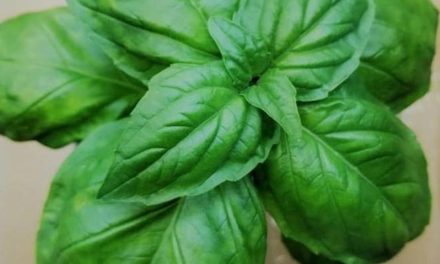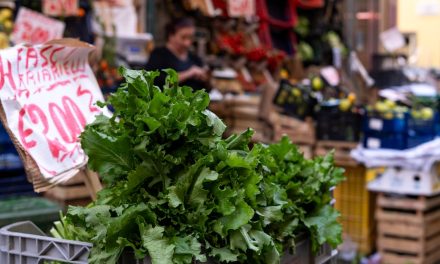Discover the Best Garden Vegetables to Grow in Canada: A Guide for Canadian Gardeners
Canada’s diverse climate offers a unique challenge and opportunity for vegetable gardening enthusiasts. Whether you’re a seasoned gardener or just starting out, knowing the best garden vegetables to grow can make all the difference in your yields. With a focus on popular options like tomatoes, cucumbers, and green beans, this guide will dive into the specifics of growing vegetables in Canada, including tailored Canadian gardening tips and insights for different regions. Discover how you can maximize your garden’s potential, harnessing local conditions to cultivate thriving, delicious crops. Get ready to transform your gardening experience and learn about the top vegetable varieties suited for Canadian soil and climate.
Top Vegetable Choices for Canadian Gardens
Tomatoes: A Versatile Staple
Tomatoes are a favorite among Canadian gardeners, prized for their versatility and productivity. They thrive in various climates across the country, making them a reliable choice for both novice and experienced gardeners. When planting tomatoes, consider starting seeds indoors around 6-8 weeks before the last frost date. This approach gives the plants a robust start, ready to be transplanted outdoors when the weather warms. Ensure they receive ample sunlight and are planted in well-draining, nutrient-rich soil. Regular watering and occasional feeding with a balanced fertilizer can help maximize yields. Popular varieties like ‘Beefsteak’, ‘Roma’, and ‘Cherry’ tomatoes each offer unique flavors and uses, from fresh salads to savory sauces. By choosing the right tomato variety for your region and providing proper care, you can enjoy a bountiful harvest throughout the growing season. Embrace the joy of growing tomatoes and enhance your garden’s productivity.
Green Beans: Easy and Nutritious
Green beans are an excellent choice for Canadian gardens, offering ease of cultivation and nutritional benefits. These beans adapt well to various climates and soil types, making them a versatile option for gardeners across the country. Plant green beans directly in the garden after the last frost, ensuring the soil temperature is warm enough for germination. Opt for well-draining soil and a sunny location to promote healthy growth. Green beans require minimal maintenance; regular watering and occasional weeding are usually sufficient to keep plants thriving. Both bush and pole varieties are available, with pole beans needing support structures like trellises. Green beans are rich in vitamins A, C, and K, making them a healthy addition to your diet. Harvest them when they are young and tender for the best flavor and texture. By growing green beans, you can enjoy a steady supply of fresh, nutritious vegetables throughout the growing season.
Cucumbers: Crisp and Refreshing
Cucumbers are a popular garden vegetable in Canada, known for their crisp texture and refreshing taste. They flourish during the warm summer months, making them an ideal crop for Canadian gardeners seeking a heat-loving plant. Begin by sowing cucumber seeds outdoors after the danger of frost has passed, or start them indoors a few weeks earlier to give them a head start. Cucumbers prefer well-drained soil enriched with organic matter and a location with full sun exposure. Consistent watering is crucial, as cucumbers have high water content and can suffer if allowed to dry out. Trellising can encourage vertical growth, saving space and reducing pest issues. Varieties like ‘Marketmore’ and ‘English’ cucumbers provide different flavors and uses, suitable for salads, pickling, or refreshing snacks. By incorporating cucumbers into your garden, you not only enhance your produce selection but also enjoy the satisfaction of growing fresh, hydrating vegetables right at home.
Understanding Regional Growing Conditions
Climate Considerations Across Provinces
Canada’s vast geography results in diverse climate conditions that significantly impact vegetable gardening. In coastal provinces like British Columbia, mild winters and a lengthy growing season favor crops such as leafy greens and cool-season vegetables. In contrast, the Prairie provinces experience shorter, more intense growing seasons, making fast-maturing crops like peas and radishes ideal. Ontario and Quebec benefit from a mix of climates, allowing for a wide variety of vegetables, including tomatoes and peppers, to thrive. The Atlantic provinces face challenges with cooler temperatures and high humidity, necessitating careful selection of hardy varieties such as potatoes and cabbage. In the northern territories, the brief growing season requires swift-growing and cold-tolerant vegetables like spinach and kale. Understanding these regional climate differences is crucial for selecting the best garden vegetables to ensure successful harvests. By tailoring your gardening practices to local conditions, you can optimize plant growth and productivity.
Best Planting Times for Your Region
Determining the optimal planting times for your region is essential for successful vegetable gardening in Canada. Each province has its own climate nuances that dictate when to sow seeds. In the milder regions of British Columbia, gardeners can start planting cool-season crops as early as March. Warmer crops like tomatoes and cucumbers are best sown in May, after the last frost. In the Prairies, where late frosts are common, it’s advisable to wait until late May or early June before planting tender vegetables. Ontario and Quebec offer flexibility with planting times, generally starting in late April for hardy crops and mid-May for more delicate varieties. The Atlantic provinces may need to delay planting until late May due to cooler spring temperatures. In northern territories, consider starting seeds indoors to maximize the short growing season, typically planting outdoors by late May or early June. Tailoring planting schedules to your specific region helps ensure robust growth and ample yields.
Essential Canadian Gardening Tips
Soil Preparation and Fertilization
Proper soil preparation and fertilization are vital for successful vegetable gardening in Canada. Begin by testing your soil to determine its pH level and nutrient content, which will guide your amendments. Most vegetables thrive in slightly acidic to neutral soil, with a pH ranging from 6.0 to 7.0. To enhance soil fertility, incorporate organic matter such as compost or well-rotted manure. This not only enriches the soil with nutrients but also improves its structure and water retention capabilities. In regions with heavy clay or sandy soils, adding organic matter is particularly beneficial. Fertilization should be tailored to the needs of specific crops. Use a balanced fertilizer with equal parts nitrogen, phosphorus, and potassium for general garden use. For heavy feeders like tomatoes and peppers, additional nutrients may be necessary. Regularly replenishing soil nutrients ensures robust plant growth and higher yields, making soil preparation a cornerstone of effective vegetable gardening.
Pest Management for Healthy Crops
Effective pest management is crucial for maintaining healthy crops in Canadian gardens. Begin by promoting a balanced ecosystem in your garden, which can naturally keep pest populations in check. Encourage beneficial insects like ladybugs and lacewings by planting diverse flowers and herbs that attract them. Regularly inspect plants for signs of pests or damage, catching infestations early before they become severe. Implement cultural controls such as crop rotation and interplanting to disrupt pest life cycles. For persistent issues, consider using organic pest control methods like insecticidal soaps or neem oil, which are less harmful to beneficial organisms. Physical barriers, such as row covers and nets, can also protect vulnerable plants from specific pests. Maintaining healthy soil and plants through proper watering and fertilization can reduce susceptibility to infestations. By integrating these pest management strategies, you can safeguard your crops and promote a thriving, productive garden environment.












